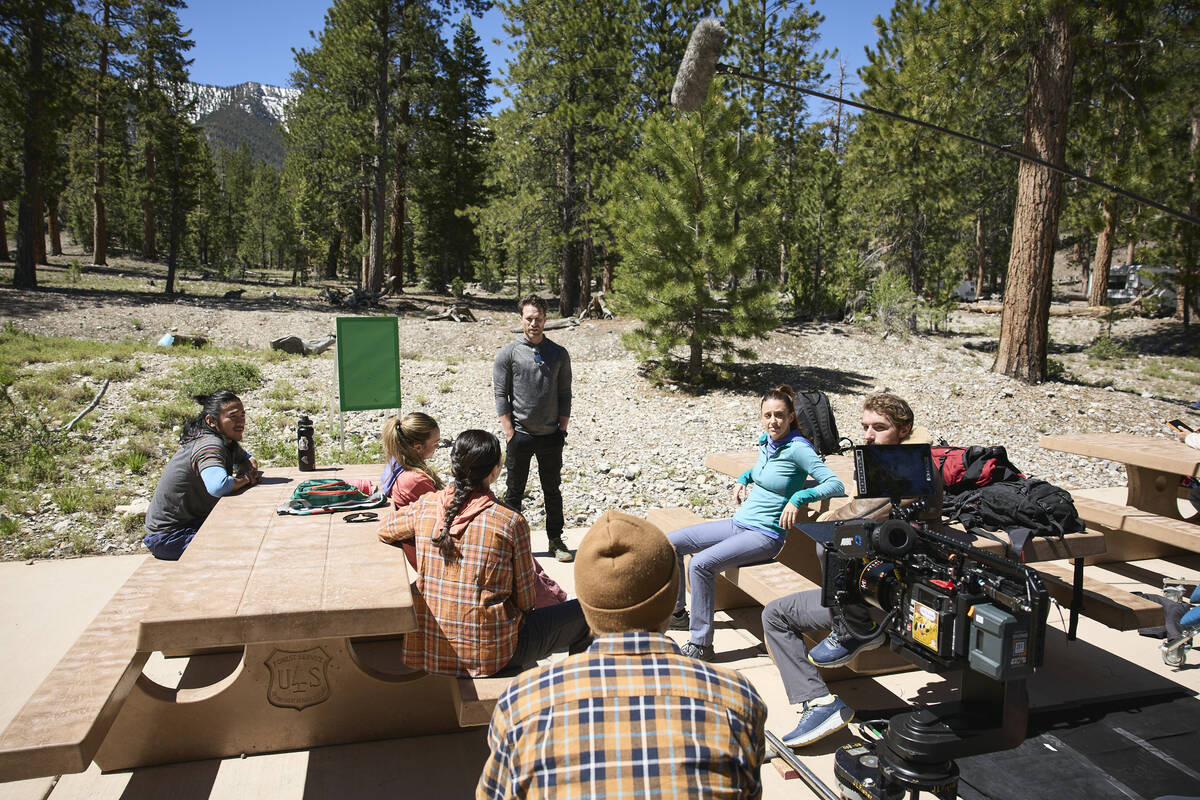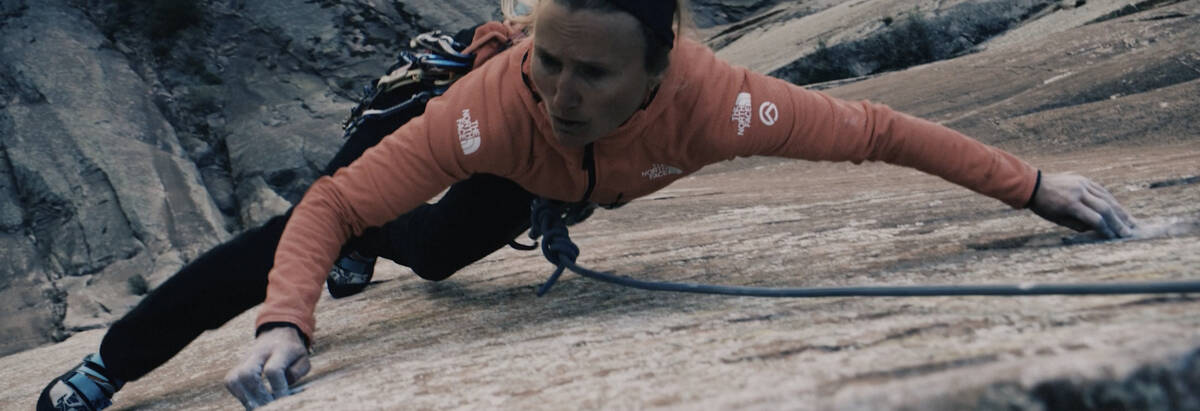‘Free Solo’ meets ‘The Thing’: Locally made movie ready for action
Brendan Devane knows sound.
He spent years as a roadie, drum tech and stage manager — mostly for jam bands and festivals — and has a music studio in his northwest Las Vegas home.
Devane worked for The String Cheese Incident as well as George Strait’s T-Mobile Arena residency and the first Bonnaroo.
He was driving back from George Lucas’ Skywalker Ranch — the famed postproduction facility in Marin County, California, where he mixed the sound for his first movie, 2021’s “The Canyonlands” — when he was struck by a thought: “What if there was a villain that just existed as a sound wave?”
The result of that idea will be on display starting Friday when “The Sound” arrives at Downtown Cinemas and on video on demand.
Keeping things local
Devane saw “Free Solo,” the groundbreaking, Oscar-winning documentary about Las Vegas-based climber Alex Honnold’s ascent of Yosemite’s El Capitan.
Then he saw the online reaction to it, with moviegoers posting about how scary it was watching Honnold hang off the side of the rock face, alone and without a rope.
Devane took that initial sound wave idea, merged it with the perils of rock climbing, then wrote and directed “The Sound.” He describes it as “Free Solo” meets “The Thing.”
Fittingly, first images viewers see, following a prologue set in 1959, are of Honnold scaling the Rainbow Wall in Red Rock Canyon National Conservation Area.
“It obviously made a lot of sense to have the world’s most visible rock climber, who lives in Las Vegas, in our film,” Devane says. “I’m just really glad that it worked out.”
It isn’t much more than a cameo, but he — along with climbers Brette Harrington and Hazel Findlay, who are also in those scenes — lends credibility to “The Sound.”
The three of them beg off, though, before the action moves to a sacred Canadian mountain known as the Forbidden Wall. Other climbers, the first allowed on it in decades, are hundreds of feet off the ground when they’re terrorized by a malevolent force.
Liberty Bell Mountain in the North Cascades of Washington stood in for the fictional wall in far-off shots that show the characters making their ascent. The rest of “The Sound,” roughly 95 percent of it, was shot in Clark County.
Base camp scenes were filmed near the Upper Lee Meadows on Mount Charleston. Footage that shows the actors’ faces as they climb was captured inside Vū Las Vegas by placing a rock wall in front of LED screens that played computer-generated backdrops.
It’s roughly the same technology that made it appear that Mark Wahlberg was piloting a small plane in Alaska in “Flight Risk,” which filmed at the same time, three miles away.
Devane had planned to film in Lamoille Canyon in the Ruby Mountains outside Elko. Then Ryan Galvan, his director of photography, suggested shooting on the same type of virtual stage, known as a Volume, that was created for “The Mandalorian.”
Filming in a controlled environment proved safer and more efficient as the cast and crew didn’t have to wait for acceptable weather and lighting conditions. Some of the cost of the technology upgrade was offset by letting the crew, most of whom live in the valley, sleep in their own beds.
“These are challenging things for big studio movies,” Devane says of the technology, “let alone smaller, lower-budget, independent films like us.”
Changes needed
Devane is proud to have produced “The Sound” in Las Vegas and to have pumped $1.2 million of its $2 million budget directly into the local economy in just two weeks. But his next project, a medical thriller, will be made elsewhere.
“I would love to shoot as much as I can here in Las Vegas,” he says. “But it’s not practical. It just isn’t.”
Nevada’s tax incentives for filmmakers simply aren’t competitive when compared with other states, Devane says. With the massive push to revamp them having died at the end of the recent Legislative session, they’ll probably remain that way for a while.
“Eventually, if people want a functioning Nevada film industry, the tax incentives need to be updated,” Devane says.
Smaller productions like his, he explains, need every dollar they can get.
“I want to film in Vegas. I want to film in Vū. I want to hire everybody here in Vegas,” Devane says. “But why should I leave, literally, hundreds of thousands — or millions of dollars in the bigger films — on the table?”
Contact Christopher Lawrence at clawrence@reviewjournal.com or 702-380-4567.



















